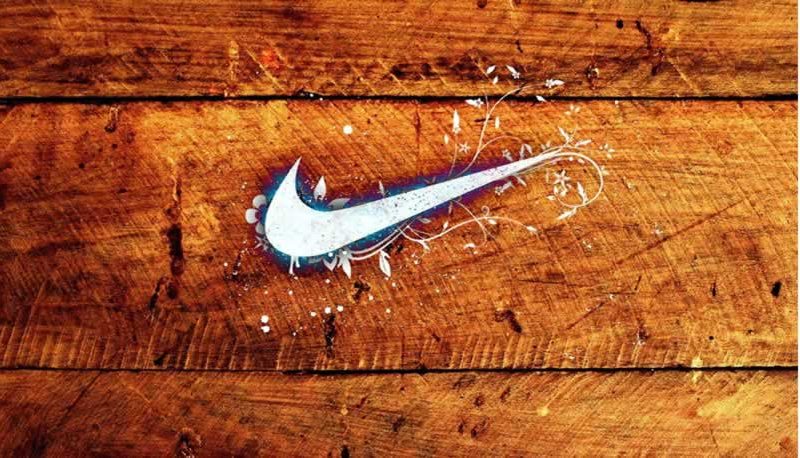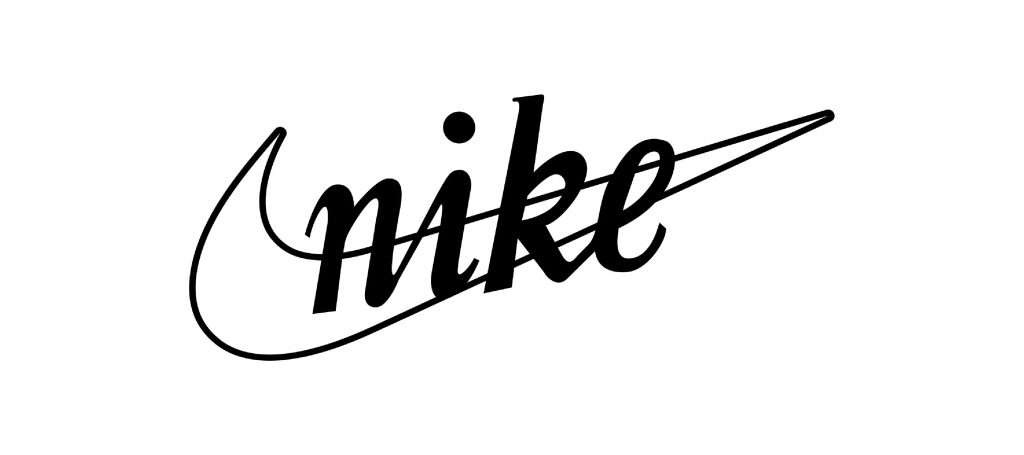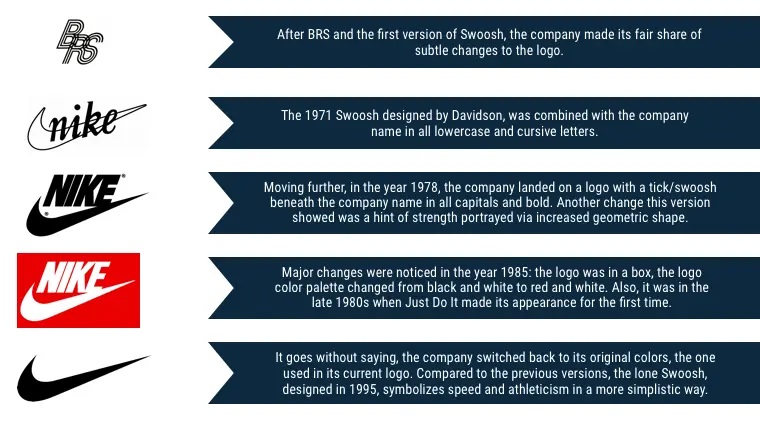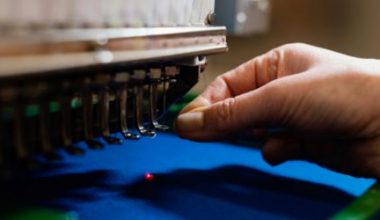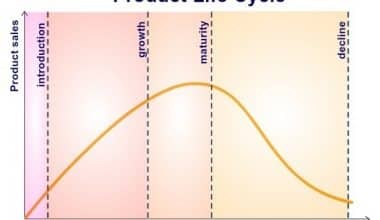There are no doubts about a few firms that come to mind when you think about legendary American brands. Some of the most well-known companies include Apple, McDonald’s, Coca-Cola, and Google. In fact, you only need to look at the logos of these companies to figure out what they are! Nike is another corporation that has developed a distinct brand identity that allows customers to instantly recognize its products and has become a trusted and well-known brand for its shoes, clothes, and athletic products. However, as popular as Nike’s logo is, did you know that the “swoosh” was first created as a $35 design?
This post covers all you should know about the Nike logo, which will also go a long way in helping you understand the importance of branding and how to do it rightly.
What Makes a the Nike Logo (Swoosh) Iconic? (Summary)
Carolyn Davidson, a graphic design student at Portland State University, was sitting in the hallway in 1971. She said that she didn’t have enough money to take a class. Phil Knight, an accounting professor, approached her about doing freelance work for his company, Blue Ribbon Sports. Blue Ribbon Sports decided to create their own football shoe line, known as Nike. Knight enlisted the help of Davidson once more to develop a logo for the new company.
The design took around 17 and a half hours to complete. When placed on a shoe, Davidson wanted to portray mobility in a design that was clean and traditional. Importantly, the design had to be distinct from that of competitor Adidas.
The Swoosh was made up of two curving lines that convey motion and include onomatopoeia. Say the word “swoosh” out loud. What do you have in mind? Even the word itself carries a sense of motion. She began by doodling motifs on tissue paper, which she then layered over a shoe drawing.
Knight and his business partners were initially unimpressed with the design, but they decided to go forward with the Swoosh nevertheless. The logo now stands for a lot more than just motion. For a multibillion-dollar corporation that has established itself as a sports authority, the Swoosh represents a way of life rather than a specific product.
Evolution of the Nike Swoosh Logo
Nike was inscribed in Futura Bold within the Swoosh until 1995. Futura is a sans serif font based on geometric designs that became popular during the twentieth century. It’s meant to convey foresight and efficiency. Nike withdrew their name from the design and hence the font after 1995, but its brand was established: Davidson’s Swoosh is Nike’s primary identification.
As a result, the Swoosh was born. Davidson was compensated $35 for her contributions to the project.
Davidson was then given a ring with an inlaid diamond and an envelope containing 500 shares of Nike stock after the company’s success.
The Swoosh’s $35 Journey Begins
The company, which controls more than 62 percent of the global shoe market, did not achieve its dominance overnight. Zooming in, one of the most important visual branding aspects, the Nike logo, was created in just eight years – and the rest is history.
Let us begin by looking at the year 1971; 6 years after the inception of Phil Knight’s soon-to-be company, now known as Nike.
Phil noticed that one of his students, Carolyn Davidson, a journalism aficionado who went into the design sector after taking a design course as an elective, did not have enough money to enroll in a class while working as an accounting professor. He invited her to work for his company, Blue Ribbon Sports, as a freelancer.
Moving forward, Knight chose to start his own footwear firm with a factory in Mexico, which first appeared to be a brand centered on shoes for soccer or football players.
He went back to Davidson for a stripe, which is a phrase for a shoe logo. They also determined that the design should have a sense of motion but not be similar to Adidas’ three-stripe emblem.
A Wish Fulfilled
According to reports, the company’s name, Nike, was inspired by a dream that Knight’s colleague, Jeff Johnson, had. In Jeff’s dream, a Greek goddess named Nike appeared, and she was also the inspiration for the Nike logo design.
Goddess Nike, the Goddess of Victory, is said to have influenced countless brave warriors to help their country win conflicts. The swoosh, which represents Goddess Nike’s wings, are thought to have carried inspiration and boldness to fighters heading to battle zones.
While no proof exists, some experts believe that all of the aspects, including the moniker “Nike,” the phrase “Swoosh,” and the motto “Just Do It,” hints at a hidden inspiration from the Greek Goddess.
Davidson began work on the logo by sketching and outlining it on tissue paper, then overlaying it over a shoe drawing. The Nike tick/swoosh mark was created using two curving lines to represent movement and onomatopoeia. Knight and BRS executives eventually chose the one that is now known as the Swoosh from a list of roughly six options.
The globally adored swoosh was designed over the course of 17 hours for $35. Knight was initially unimpressed with the design, but he expected it to grow on him over time. He had no idea that it would grow on people all around the world.
No Eureka Moment
The Nike logo developer received a major, though delayed, award in the shape of a valuable ring with the Swoosh as an appreciation gift, as well as 500 shares of the firm, although it was not the final logo.
The logo for Davidson depicted the Goddess Nike wing, and stockholders thought it was related to a ribbon. However, now that we know the company relates the image to their motto, we interpret the emblem as a metaphor for speed and energy. Nonetheless, this point of view took a long time to emerge.
History of Nike Logo; They Didn’t Just Do It
Following BRS and the first version of Swoosh, the business made a number of minor tweaks to the logo.
The company name was written in all lowercase and cursive letters, with the Swoosh developed by Davidson in 1971.
In 1978, the company decided on a design that had a tick/swoosh beneath the company name in all letters and bold. Another change in this iteration was the addition of a hint of strength in the form of a larger geometric shape.
In 1985, there were significant changes: the logo was enclosed in a box, and the logo’s color palette shifted from black and white to red and white. Also, the first appearance of, “Just Do It” occurred in the late 1980s.
It goes without saying that the corporation returned to its original colors, which are the same as those in its present logo. The lone Swoosh, introduced in 1995, represents speed and athleticism in a more basic fashion than previous incarnations.
Given the humble beginnings and meticulous attention to detail, we can understand Phil Knight’s comment about the history of the Nike logo, “Swoosh logo was not a ‘eureka’ moment.”
Elements of Nike Logo Design
One of the most simple logo designs is the Nike logo. The swoosh symbol is a memorable business sign thanks to its simplicity. The company’s brand identity is mainly reliant on this sign.
Nike Logo Shape: As we’ve earlier mentioned, the swoosh emblem is designed to resemble the wing of Nike, the Greek Goddess of Victory. So, due to the goddess, Carolyn Davidson had the shape of the wing in mind.
Nike Color: Over the years, the swoosh symbol has come in a variety of hues. It appeared in a pitch-black color for many years. The brand’s color was then changed to a basic orange at some point. Moved to red and now back to black.
Nike Logo Font: The font of the logo is a symbol. However, the tagline “Just Do It” appears over the emblem on occasion. On other occasions, the logo will also include the corporate name. The Futura Bold typeface is used in the text. The Nike logo is written in large characters, which serves to promote the brand.
The letter K is slightly tilted in order to make the firm name stand out. Until 1995, the name “Nike” featured on top of the emblem in Futura Bold.
In 1995, the corporate name “Nike” was removed from the logo. The only remaining logo design feature is the swoosh, which serves as the company’s primary identifier.
Nike’s Background
Phil Knight and Bill Bowerman teamed up to start Blue Ribbon Sports in 1964. Each man committed $500 after a simple handshake to import and sell the Japanese shoe Tiger in the United States.
At the time, the majority of athletes all over the world favored German shoe manufacturers. As a result, the two founded Blue Ribbon Sports Inc., which would later become known as Nike, a successful sports gear brand.
Nike’s Beginnings
Bill Bowerman enjoyed jogging and working with his athletes to improve their performance. At the University of Oregon, he was a nationally regarded track and field coach. Phil Knight was a track and field athlete who participated in Bowerman’s program. He then moved on to Stanford University to get his MBA.
Both Knight and Bowerman believed that shoe technology might be bettered. Knight even wrote a paper outlining how high-quality Japanese shoes might compete with the world’s leading brands at the time.
Bowerman worked hard to create shoes that were comfortable, inexpensive, and safe for his athletes. While his first models failed, Knight’s article enabled him to realize his dream.
Knight pitched his ideas to a number of investors before deciding to work on his own. Bowerman advised that they link up and form a partnership when he presented his ideas to his old coach.
A Growing Company
Blue Ribbon Sports had a ton of mail-order sales and its own shop as it grew. The founders began to realize that, in addition to distribution and direct sales, manufacturing might be something they could venture into in the future. As a result, they started the first steps toward founding Nike, a shoe manufacturing corporation. They also introduced the famed Nike swoosh symbol at the same time.
It is thought that there are two crucial criteria that will determine their ultimate success. The first was that Knight and Bowerman were still experimenting with shoe technology at the time. They never stopped thinking about how they could make shoes better.
When the best sports shoes are performing at their best, an athlete’s performance will inevitably improve. As a result, Bowerman and Knight were able to produce a variety of novel designs, which were used by competitors at local Oregon trials.
Second, Nike’s long-term success can be related to how the brand is perceived now, with world-famous athletes such as Michael Jordan and Roger Federer promoting the shoes. Athletes’ support and advertising were critical for Nike’s revolutionary footwear and technology.
In the beginning, the brand was able to get Steve Prefontaine’s promotion and endorsement, and he did a fantastic job in their shoes. Prefontaine did exceedingly well at the 1972 Munich Olympics while wearing Nike sneakers. He was also featured in the Sports Illustrated magazine.
The Nike Ups and Downs
Nike had several highs and lows throughout the 1980s. Aerobics became a worldwide craze, and this type of exercise necessitated the use of special footwear. Nike could have taken advantage of the opportunity to produce and sell aerobics shoes, but they blew it.
Fortunately, Nike was given the opportunity to rehabilitate itself rather fast. They created and debuted their newest “airbag” technology, which included cool, trendy designs with translucent soles. They also debuted the infamous “Bo Knows” adverts and cross-training shoes at the same period. During the 1980s, Nike’s “Jordan Air” brand surged in popularity. Jordan Air is one of the most well-known and long-lasting brands in history.
The Nike Expansion
Nike began branching out into soccer, golf, sportswear, and other sports fields in the 1990s and 2000s. The Nike logo can now be found on a variety of products, including fitness technology, casual clothing, workout apparel, and, of course, athletic shoes.
However, Nike’s image has recently suffered as a result of its troublesome athletes, like Lance Armstrong and Tiger Woods. Nonetheless, there’s no denying that the firm has a global presence, and its sponsorships extend far into the sporting world.
Nike’s Investments
Aside from leveraging celebrities to attract clients, Nike has purchased a number of small businesses in order to remain ahead of the competition and expand their success. Simultaneously, they’ve sold off a slew of tiny businesses to help balance the books.
For the time being, Hurley International and Converse are two of the company’s primary subsidiaries. Tennis, football, and basketball players each have their own sporting shoe collection. Also, athletes from the Olympics have not been forgotten!
Nike has grown to be the successful corporation it is now, with at least 44,000 workers throughout the world, thanks to a lot of hard work and some good judgments. The corporation is valued at about $10 billion, with annual revenues in the hundreds of millions of dollars.
Nike’s success has been attributed to the company’s never-ending innovation and well-timed investments, which have resulted in annual earnings of several hundred million dollars.
Timeline Summary
1964: Blue Ribbon Sports was founded by Phil Knight and Bill Bowerman.
1971: After severing connections with Asics (previously Onitsuka Tiger), Blue Ribbon Sports adopts the swoosh emblem developed for $35 by Carolyn Davidson, a Portland State University student. Bowerman creates the distinctive sole for Waffle Trainers the same year. He’d stuffed rubber into a waffle maker.
1972: Ilie Nastase, a Romanian tennis player, signed the first-ever endorsement deal with Nike.
1978: With the launching of its revolutionary Tailwind sneaker, Nike trademarked “Air” technology.
1980: Nike shares are sold to the public for 18 cents each.
1984: Michael Jordan inks a sponsorship deal with Nike, introducing the “Air Jordan” brand.
1987: Nike produces a commercial for the new shoe brand “Air Max,” which features The Beatles’ “Revolution” song. It was the first commercial to include music by The Beatles.
1988: The first “Just Do It” commercial was released, portraying Walter Stack, an 80-year-old great athlete, jogging across the Golden Gate Bridge.
1989: The “Bo knows” commercial campaign, starring football and baseball star Bo Jackson, debuts.
In the year 1990, the first Nike town shop opened in Portland, Oregon.
In 1991, Jeff Ballinger issued a paper exposing horrible working conditions and low wages in Nike factories in Indonesia. Nike takes action by establishing its first factory regulations of conduct.
1996: Tiger Woods is signed by Nike.
1998: In the face of significant opposition, Nike raises its employees’ minimum salary, increases monitoring, and incorporates US OSHA regulations for clean air in its international operations.
1999: Bill Bowerman, the inventor of Nike, dies at the age of 88.
21st Century
2002: Hurley International, a surfwear manufacturer, was purchased by Nike.
2003: Kobe Bryant and LeBron James are signed by Nike.
2004: Converse was purchased by Nike for $309 million.
Phil Knight resigns as Nike’s president and CEO in the same year but remains chairman when William Perez takes over as the company’s new CEO.
2008: Derek Jeter was signed by Nike.
2012: Nike becomes the NFL’s official kit provider.
2015: Nike becomes the NBA’s official kit provider.
2018: Nike debuts an ad campaign starring athlete and politician Colin Kaepernick, which received both negative and positive feedback.
Lawsuits
After graphic designer Ari Saal Forman produced his Ari Menthol 10s shoes, which blended the design of the Nike Air Force 1 with Newport’s name and colors, Lorillard (the previous owner of Newport) and Nike sued him in 2006. The shoes were “dedicated to the two brands who have taken the most and given the least,” according to Forman. Forman is no longer authorized to own a pair of Menthol 10s as a result of the litigation.
Nike sued MSCHF in 2021 for the “Satan Shoes,” a customized version of the Nike Air Max 97 featuring clearly Satanic imagery. Nike claimed trademark infringement and that their logo was incorrectly associated with Satanism. The modified shoes could not be marketed, according to a US district judge.
Benefits of a Simple Logo Design like Nike’s
As part of branding efforts for any small business, it is important to note that you make the logo as simple as possible. Do not include too excessive information. This is so that audiences will not be overburdened or consume excessive amounts of information.
Furthermore, a logo with a simple color palette often appears more trustworthy. A simple logo has a more iconic and captivating sense about it.
Nike Logo Design Wisdoms: Less is better + Pronounceable logo
Nike’s logo was debranded at the perfect time. They held off on debranding until their company grew to be large and well-known around the world.
Less is more + Pronounceable logo are two Nike logo design maxims.
Throughout Nike’s logo alteration, the wisdom of the Nike logo has been “less is better.” By removing the typography, the Nike logo conveys a sense of adventure and bravery.
Another clever move was to make the swoosh logo pronounceable, as it may be read as “like,” “check,” “tick,” or “right.” Naturally, “Nike” is a combination of the words “New” and “Like.”
The Takeaway
While Nike has had its ups and downs since its inception in 1964, the corporation is showing no signs of slowing down, and its future appears brighter than ever. The success story of this brand and logo is smart and original, setting the standard for many modern sporting companies. Many Nike fans nowadays would be unable to function without the company’s products.
The rise in knockoffs and duplicates could be another sign of Nike’s success. Many sporting goods in some areas have similar, if not identical, trademarks and symbols to Nike’s. However, if you want Nike’s quality and warranty, you’ll have to buy directly from the manufacturer.
When did Nike change its logo?
In 1995, the corporate name “Nike” was removed from the logo. The only remaining logo design feature is the swoosh, which serves as the company’s primary identifier.
What Type of Logo Is the Nike Logo?
The Nike logo is classified as an icon logo, with the swoosh sign serving as the primary identity.
What Is the Meaning Behind Nike Logo?
Goddess Nike, the Goddess of Victory, is said to have influenced countless brave warriors to help their country win conflicts. The swoosh, which represents Goddess Nike’s wings, are thought to have carried inspiration and boldness to fighters heading to battle zones.
